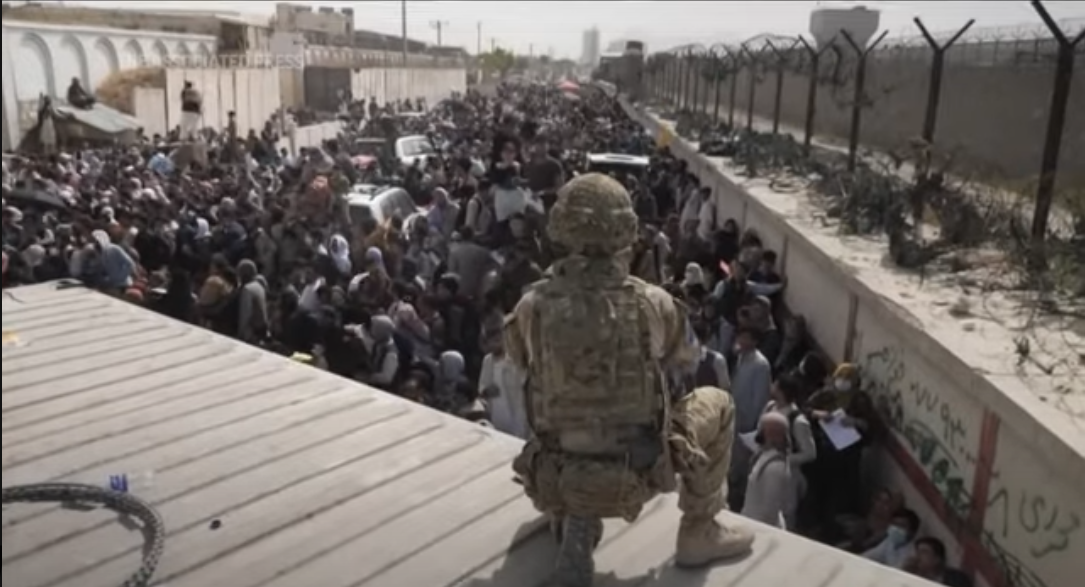LeVar Burton will host the special "Open a Book, Open the World: The Library of Congress National Book Festival" which will premiere Sept. 12 on PBS. Photo credit: Robyn Von Swank Television viewers can see an inspiring introduction to the 2021 Library of Congress National Book Festival and its exciting lineup of authors, poets and writers in a one-hour special this September on PBS.
“Open a Book, Open the World: The Library of Congress National Book Festival,” hosted by LeVar Burton, will premiere Sunday, Sept. 12, at 6 p.m. ET (check local listings) on PBS, PBS.org and the PBS Video app. The program will offer a timely celebration of the power of books and discussions on some of the big topics of the day.
“Books open the world to us, fuel our imaginations and show us our common humanity, especially as we confront huge challenges in society,” said Librarian of Congress Carla Hayden. “We’re proud to collaborate once again with PBS and public television stations nationwide to celebrate the power of reading from our national library.”
 |
| LeVar Burton |
Burton, a longtime champion of reading, will host from his public library in Los Angeles with Hayden appearing at the Library of Congress in Washington, D.C. The show will feature 20 of the nation’s leading literary voices discussing their newest books and speaking to the festival theme, “Open a Book, Open the World.”
“I’m proud and honored to join Dr. Carla Hayden to explore the National Book Festival,” Burton said. “A good book can take you on a journey. After the last year, we’re all ready to plot a new course, and books can be an amazing compass. Join me for the National Book Festival as some of our nation’s leading literary voices bring us a sense of renewal, discuss their newest work and open up a whole new world of possibilities.”
Authors featured in the special are:
--Michael J. Fox, actor, film producer and activist, on his book “No Time Like the Future: An Optimist Considers Mortality.”
--Tana French, American Irish writer known as the “First Lady of Irish Crime” on her book “The Searcher.”
--Diane von Furstenberg, world-renowned fashion designer and entrepreneur, on her new book “Own It: The Secret to Life.”
--Bill Gates, co-founder of Microsoft Corp. and founder of Breakthrough Energy for clean technologies on his book “How to Avoid a Climate Disaster: The Solutions We Have and the Breakthroughs We Need.”
--Roxane Gay, essayist and novelist, on her co-authored book “The Sacrifice of Darkness.” --Annette Gordon-Reed, Pulitzer Prize-winning historian, discussing her book “On Juneteenth.”
--Amanda Gorman, author of “The Hill We Climb: An Inaugural Poem for the Country,” on how books have opened the world for her.
--Adam Grant, organizational psychologist, on his book “Think Again: The Power of Knowing What You Don't Know.”
--Yaa Gyasi, PEN/Hemingway Award-winning novelist, on her book “Transcendent Kingdom.”
--Mishal Husain, BBC News anchor, who wrote “The Skills: From First Job to Dream Job―What Every Woman Needs to Know.”
--Kazuo Ishiguro, Nobel Prize-winning novelist, on his book “Klara and the Sun.”
--Chang-rae Lee, PEN/Hemingway Award winner, on his book “My Year Abroad.”
--Silvia Moreno-Garcia, novelist in several genres, including horror and noir, on her books “Mexican Gothic” and “Velvet Was the Night.”
--Viet Thanh Nguyen, Pulitzer Prize-winning novelist, on his book “The Committed.”
--Lupita Nyong’o, Oscar-winning actress and activist, on her children’s book, “Sulwe.”
--Christopher Paolini, fantasy and science fiction writer, on his book “To Sleep in a Sea of Stars.”
--Sarah Pearse, novelist of horror, on her debut book, “The Sanatorium.” --Angie Thomas, writer of international bestsellers for young people, on her book “Concrete Rose.”
--Martha Wells, Hugo and Nebula award-winning writer, on her book “Fugitive Telemetry.”
--Isabel Wilkerson, historian and Pulitzer Prize-winning journalist, on her book “Caste: The Origins of Our Discontents.”
The National Book Festival is made possible by the generous support of private- and public-sector sponsors who share the Library’s commitment to reading and literacy, led by National Book Festival Co-Chair David M. Rubenstein. Sponsors include: Festival Vice Chair the James Madison Council; Charter sponsors The Washington Post, Institute of Museum and Library Services, National Endowment for the Arts and National Endowment for the Humanities; Additional generous support from the Library of Congress Federal Credit Union, Tim and Diane Naughton and Capital Group; Presenting Partner NPR; and Media Partner The New Republic.
Follow the festival on Twitter @LibraryCongress with hashtag #NatBookFest, and subscribe to the National Book Festival Blog at loc.gov/bookfest. The Library of Congress is the world’s largest library, offering access to the creative record of the United States — and extensive materials from around the world — both on-site and online. It is the main research arm of the U.S. Congress and the home of the U.S. Copyright Office. Explore collections, reference services and other programs and plan a visit at loc.gov, access the official site for U.S. federal legislative information at congress.gov and register creative works of authorship at copyright.gov.

















































